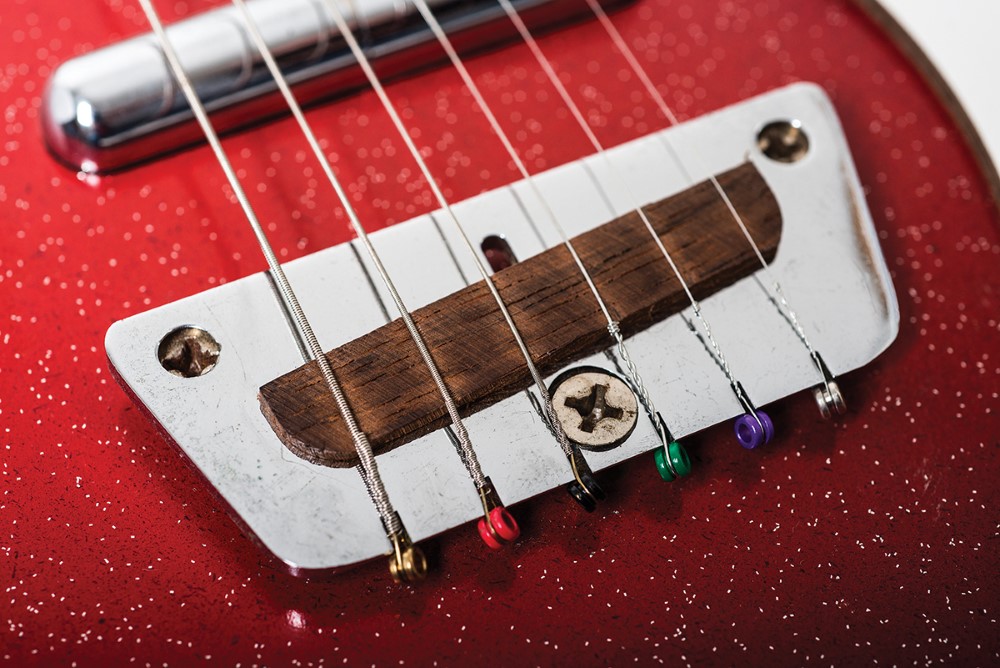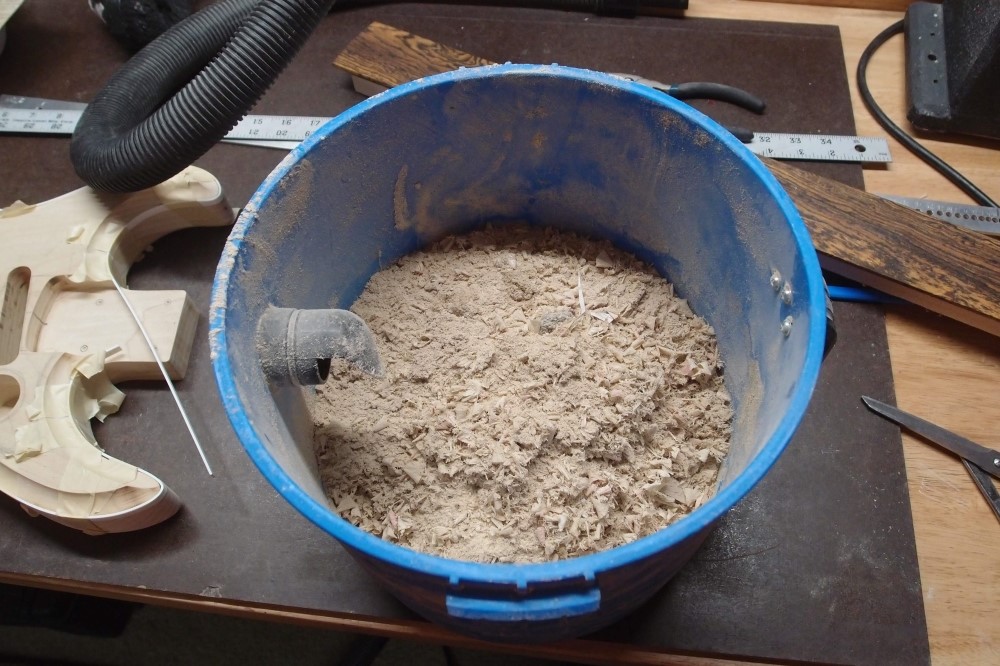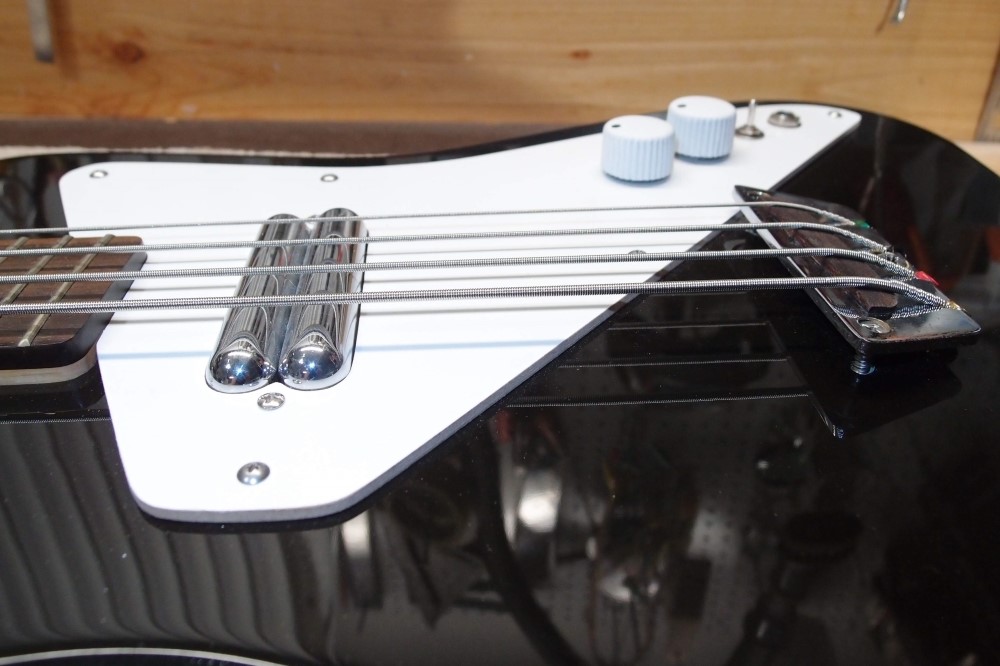Intonation

There are two components to intonation. The first is simple - locating the bridge at the right spot. You'd think that would be obvious, you'd be surprised how often it is gotten wrong. Like my Rickenbacker. The second part is the additional length or 'compensation' needed for each string beyond the scale length. That derives from the string's mechanical resistance to bending, or its stiffness, which is proportional to its diameter. That's why the low fat strings need more compensation than the thinner ones - shortening the string increases its relative stiffness, or the ratio of diameter to length, and causes it to go sharp as you go up the neck. I have never seen a negative compensation, I think theoretically it should not exist.
It gets messy, because there are as many ways to set up intonation as there are frets. The simplest way is nut to octave or octave harmonic. I decided a long time ago that I don't like basing my intonation on those two oddball cases - there must be something that makes more sense. So I usually set it based on 3rd / 15th frets, or 5th / 17th frets, which seem like more representative locations for actual playing. If the nut is in perfect tune, the 3rd fret is going to be pretty far out, like 20 cents, what I do is make the discrepancy match between the 3 and 15, and that works pretty well. The 5th fret is usually much closer to being in tune, which maybe makes it a better candidate. Of course, however you do it, it will be right for that one situation, and wrong for all others. But then, a fretted guitar is a 'tempered' instrument, very few of the notes are precisely in tune anyway. Like I said, it's a mess. ( If you really want to make your head spin, look up 'octave stretching'. )
I found that setting intonation on a super-short scale with extra-heavy strings is much more difficult. The 25.5" open E should in theory be the same as a 34" open B, but in practice, it is a different animal. You've shortened the string and increased its relative stiffness ( a term I will just now make up without precisely defining it, not very scientific, but I think you get the idea. ) In terms of playing, you may expect the first frets on a string to have a certain feel. But the first frets on a 25.5" are the middle frets on a 34" with the same string, and they're going to feel more like that, despite what you might expect. I don't know if that makes sense. It's been a long time since I've done anything like this, but you could analyze a string as a beam fixed at both ends and actually calculate how much it will deviate from the theoretical pitch. If you look at it that way, lengthening the beam to compensate is not the right solution at all, but it is the only one we have, and it works in a kludgy partial sort of way.
The reason I dragged intonation into this is because the intonation issues of a super-short scale and the feel issues go hand in hand. The .135 that feels fine on a 34" scale that it was designed for feels uncomfortably stiff on a 25.5" scale, at least for me, and I prefer slightly heavier strings. Not surprising, going from 34" to 25" is a huge change for a string that was designed for 34". Rather than design a new string for 25", I dropped to a lighter string than I would initially have guessed, and that fixed it. The same is true of all four strings, but the effect is only very pronounced on the biggest one. Going from 34" to 32" or 30" has much less effect, I use the same strings on all three scales and it doesn't bother me on any of them. The strings are a little looser, I can't say I notice or care. Most string sets have widely different tension on each string. That and experience tell me that within reasonable limits, string tension is unimportant, although it may still be a matter of personal preference.
In fact, the truth about intonation is that it is pretty unimportant too. Sure, you want to set it right, but with 10,000 girls screaming their heads off, no one can hear it. When they put all those adjustable saddles on bridges, it made everyone think it mattered, but the truth is you're just picking your favorite mistake. You're going to be out of tune most of the time no matter what, that's just the nature of a fretted instrument. It's just lucky no one can hear it. And that's why the simple straight bridge pieces on acoustics and Danelectros work just fine. I'm not saying you shouldn't bother setting intonation, it can certainly be screwed up enough to become noticeable, and you don't want that. But all those fine adjustments are kind of pointless when you start to understand just how coarse guitar tuning really is. That said, I like to dial it in perfectly using my chosen method, but with the understanding that it is really anything but perfect.
My favorite is the 12-string guitar. Why is it that a 12-string acoustic with a straight bridge sounds just fine, yet a 12-string electric requires 12 individually adjustable saddles? Because the marketing department figures you'll pay extra for it, and everyone is trying to one-up everyone else. You can spend all day tweaking those saddles, and in the end, you've accomplished nothing.
The real purpose of the adjustable saddles on most bridges is so that the manufacturer can make some pretty bad errors in bridge placement, and dial it out with a screwdriver. Look at the huge adjustment range on a Fender bass bridge - you can stick that thing down pretty much anywhere. You have to be a lot more precise with a Tunomatic bridge. It also allows for the small differences between different types and weights of strings. The problem with my Rickenbacker is that they installed the bridge about 1/4" from where it needs to be, and there is not enough travel in the saddles to make up for it.
In my experience, the same strings at the same scale will use the same compensation, every time. That is why you can actually set intonation from one instrument to another with a ruler. In fact, similar strings use basically the same compensation, so say two different brands of nickel round-wounds are going to come out pretty much the same. There are differences between flats and rounds, and light vs heavy sets, but in all cases, I have found that intonation is purely a function of the strings, with high repeatability. The manufacturer could simply print the compensation specs on the package and save everyone a lot of trouble - it is that predictable. That is why you can design a bridge like the one above, and it will work pretty darned well once you get the overall position dialed in right. For a long-scale bass or standard guitar, intonation is a no-brainer, they generally even get it right at the factory.
I have also never encountered a single bass or guitar string that required a negative adjustment, they all require a slight bit of extra length, with the G typically requiring nothing ( this for a typical set of round-wounds. )
I would therefore start there. Set the G saddle so you have about 1/8" of screw showing, then set the bridge down so that saddle is exactly 34" from the inside edge of the nut. All the other saddles will be back from the G. The E saddle should need around 1/4" compensation, and the other two will fall between. Different sets of strings may require different settings.
Compensation arises from two things: the change in tension in the string when it is fretted, and the change in the length to width ( actually 'unit weight' ) ratio when it is shortened by fretting. As the string becomes shorter it becomes relatively stiffer/heavier, which raises its natural frequency, so it goes progressively more sharp. That's why intonation adjustments are always flat - to 'compensate'. The G string is skinny enough that the effect is negligible, but it becomes more pronounced as the strings get heavier, resulting in the angled setup that is usually seen.
This is why setting intonation by the 12th fret harmonic is not a good idea. While it will get you in the ballpark, it does not simulate actual playing and is therefore not very accurate. I generally set my intonation between fretted notes an octave apart, say 3rd and 15th frets or 5th and 17th frets. You'll find that the notes at the 3rd/15th frets are naturally pretty far out of tune, but if you make them equally out of tune, then your intonation will be accurate. The idea is to set your intonation across a range where you actually play.
Finally, don't obsess over it. As long as it is close enough, no one is going to hear it. Almost every note on a guitar neck is out of tune anyway.



Questions or Inquiries?
Just want to say Hello? Sign the .